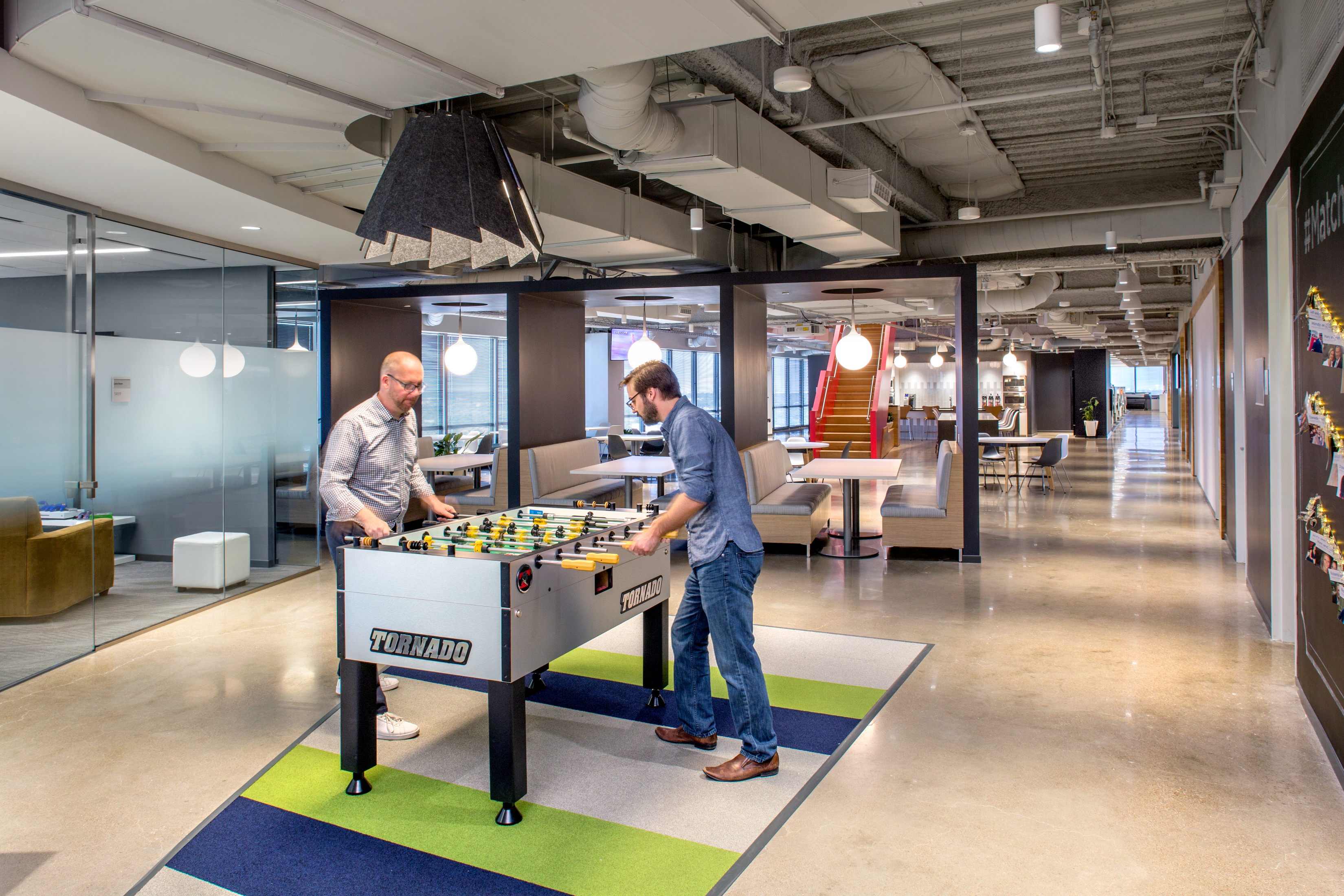Forget what you know about productivity and creativity. New research shows that wasting time can be the reset button your workforce needs.
Two decades ago, napping and staring off into space might’ve gotten you fired. But today, the most innovative companies are embracing those seemingly time-wasting activities. Daydreaming. Doodling. Snoozing. Playing video games or ping pong. Taking time-wasting breaks. New research shows all of these activities, in the end, actually boost performance at work — not to mention make the always-on work schedule a bit more manageable.
Call it the reset button for your brain.
“It’s not a waste of time,” says Diane Rogers, a behavioral designer at IA Interior Architects in San Francisco. “Work used to be a repetitive rote task. In the future, those things will be done by machine. The creative will be done by people.”
For that reason, forward-thinking employers, including Google, Salesforce, LinkedIn, and Twitter are encouraging people to take time to unwind their brains with game rooms, nap pods, and quiet areas for thinking.
No more sneaking in a nap
Of course, that trend clearly hasn’t spread to all workplaces. Just run a quick Google search for “napping in the office,” and you’ll see suggested searches like “How do I nap without getting caught at work?”
Still, a growing cadre of companies now champion the wisdom of getting a little shuteye during the workday. Take software company Autodesk. It set aside a calming space in its San Rafael, California offices for breaks, whether it’s sipping coffee in an adirondack chair or napping in a hammock. The same goes for cloud computing company VMware. Inside its Palo Alto, California offices, the “relaxation room” offers a similar setup featuring walls of clouds and blue skies and grass-green carpet.
New research by Harvard University shows that napping can not only give you a boost in energy, but it can also improve learning and long-term memory. Another study by the University of Michigan found that nappers show less impulsive behavior, a higher tolerance for frustration, and feel more alert and focused than their non-napping peers.
Still, napping isn’t foolproof. Wake up at the wrong time in the sleep cycle or sleep too long, and you’ll likely feel more groggy and drowsy. Some say you could even end up with sleep inertia, which is the feeling you get when you’re not fully awake. The best way to nap? Keep it short. According to the National Sleep Foundation, a power nap of 20 minutes is ideal, because you’ll stay in the lightest stage of non-REM sleep, making it easier to get up with more energy. The ideal time to nap is after lunch, when your blood sugar and energy starts to dip.
Bringing out the inner child
Another good-for-you time-wasting pursuit for the office? Playing games. Whether it’s chess, ping-pong, cards or video games, play can help put people in a childlike state that’s curious, imaginative and open — and hopefully spur creativity. Though we scoffed at the startup culture of PacMan arcade games, pool tables and ping-pong tables, research shows they actually benefit your workforce. Play has been shown to improve your cognitive function, relieve stress, boost optimism, and encourage people to take risks that lead to more creativity.
It makes sense, then, that Adobe put a rock climbing wall inside its San Jose offices, and Twitter put in an awesome game room in its offices, complete with foosball, basketball, skee ball and arcade video games. Video game maker Activision Blizzard has sword fighting classes for employees, and Chicago-based Red Frog Events went the extra mile to bring levity to its team, outfitting its office with a zipline, a treehouse, conference rooms with swings, a slide, and games like foosball shown in this YouTube video by Crain’s Chicago.
Munirah McNeely, Red Frog’s former resource management director, told Crain’s that Red Frog’s offices allow people to be creative and move around. “It allows us to feel like kids. That’s how I want to feel. I want to feel like I’m playing and not like I’m working all the time.”
Let your mind wander
There’s a lot being written these days on the benefits of daydreaming, which is a plus for people who’ve been scolded since childhood for daydreaming. (Not to mention this nice little nugget for those “bad” daydreamers: Georgia Tech researchers found daydreamers scored higher on intellectual and creative ability and had more efficient brain systems, according to MRIs.)
New studies also show that the mind can solve some tricky problems when daydreaming, such as driving or taking a shower. When our mind wanders, a different part of our brain gets activated, and we’re able to access information tucked away and dormant. The result? Great insights and solutions to problems that you wouldn’t have otherwise considered. You could, in fact, even boost working memory, be more creative, and more productive, too.
Throw in a pen and some paper and even doodling can offer up new ideas and provide a deeper understanding of concepts.
The value of a good break
Even if you don’t play or sleep, just getting up from your desk helps, whether it’s grabbing a cup of coffee, talking to a friend, or even goofing off online for a few minutes. Studies have shown that this can all help prevent decision fatigue. Having to make so many decisions throughout the day can actually wear down your willpower and lead to simplistic decision-making and procrastination.
Yet when times get crazed, the natural inclination is to hunker down and work more— and often, we end up being less efficient and making mistakes. Of course, when you are in a state of “flow,” or complete absorption in a task with effortless concentration, it’s not a good idea to take the break.
The bottom line? Reconsider what it means to waste time at work and give your team — and their brains — permission to turn off. In the end, it will rev them back up.
